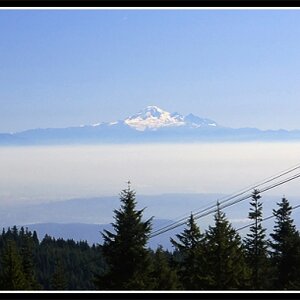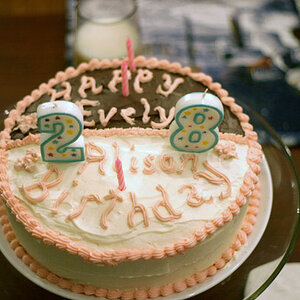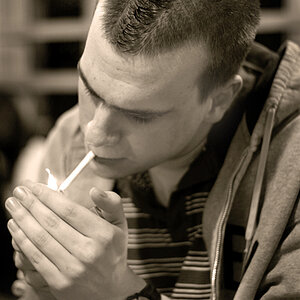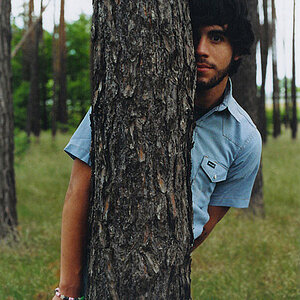- Joined
- Aug 15, 2013
- Messages
- 13,695
- Reaction score
- 3,369
- Location
- SE Michigan
- Can others edit my Photos
- Photos OK to edit
Don't ask why I did this.
I was just curious, as it shows the evolution of ISO sensitivity of the FX and DX line.
a 25% difference in numbers represents a 1/3 stop performance advantage.
Listings are Ordered by the ISO ratings
ISO = DxO ISO Low LIght test results
ISO Range = the normal ISO range
Extended = extended ISO, normally identified as "Lo" & "Hi"
DR = Dynamic Range
MP = megapixels
Year = Year released
F Pts = Focus Point / Cross Type focus point
xx = Sensor Module / Image processor / Frames Per Minute in FULL size mode
=== FX Full Frame ===
[TBODY]
[/TBODY]===DX Crop ===
[TBODY]
[/TBODY]
I was just curious, as it shows the evolution of ISO sensitivity of the FX and DX line.
a 25% difference in numbers represents a 1/3 stop performance advantage.
Listings are Ordered by the ISO ratings
ISO = DxO ISO Low LIght test results
ISO Range = the normal ISO range
Extended = extended ISO, normally identified as "Lo" & "Hi"
DR = Dynamic Range
MP = megapixels
Year = Year released
F Pts = Focus Point / Cross Type focus point
xx = Sensor Module / Image processor / Frames Per Minute in FULL size mode
=== FX Full Frame ===
| Nikon | Canon | ISO DxO | ISO Range | Extended | DR | MP | Year | F Pts | xx |
| Df $2749 | . | 3279 | 100-12,800 | 50-204,800 | 13.1 | 16.2 | 2013 | 39/9 | Multi-CAM 4800 Expeed 3 5.5 fps |
| D3s $5200 | . | 3253 | 200-12,800 | 100-102,400 | 12 | 12.1 | 2009 | 51/15 | Multi-CAM 3500FX Expeed 2 9 fps |
| D4s $6500 | . | 3074 | 100-25,600 | 50-409,600 | 13.3 | 16.2 | 2014 | 51/15 | Multi-CAM 3500FX Expeed 4 11 fps |
| D600 $2099 | . | 2980 | 100-6400 | 50-12,800 | 14.2 | 24 | 2012 | 39/11 | Multi-CAM 4800 Expeed 3 5.5 fps |
| D800e $3300 | . | 2979 | . 100–6400 | 50–25600 | 14.3 | 36 | 2012 | 51/15 | Multi-CAM 3500FX Expeed 3 4 fps |
| D4 $6000 | . | 2965 | . 100–12800 | 50–204800 | 13.1 | 16.2 | 2012 | 51/15 | Multi-CAM3500FX Expeed 3 10 fps |
| D750 $2300 | . | 2956 | 100–12800. | 50 to 51,200 | 14.5 | 24.3 | 2014 | 51/ | Expeed 4a 6.5 fps |
| D610 | . | 2925 | 100 to 6400 | 50–25600 | 14.4 | 24.3 | 2013 | 39/9 | Multi-CAM 4800 Expeed 3 6 fps |
| D810 $3300 | . | 2853 | 64–12,800 | 32-51,200 | . | 36.3 | 2014 | 51/15 | Multi-CAM 3500FX Expeed 4 5 fps |
| D800 $3000 | .. | 2853 | 100–6400. | 50–25600. | 14.4 | 36 | .2012 | 51/15 | Multi-CAM3500FX Expeed 3 4 fps |
| . | 1dx $6800 | 2786 | 100–51,200. | 50-204,800 | 11.8 | 18.1 | 2011 | 61 | 2xDIGIC5+ DIGIC 4 12 fps |
| . | 6d $1899 | 2340 | 100–25600. | 100–102,400 | 12.1 | 20.2 | 2012 | 11 | DIGIC 5+ 4.5 fps |
| D700 | . | 2303 | . | . | 12.2 | 12 | 2008 | ||
| . | 5d mk III | 2293 | . | . | 11.7 | 23 | 2012 | ||
| D3 $5000 | . | 2290 | . | . | 12.2 | . | 2007 | ||
| D3X | . | 1992 | . | . | 13.7 | 24 | 2008 | ||
| . | 5d mk II | 1815 | . | . | 11.9 | 21 | 2008 | ||
| . | 1ds mk III | 1663 | . | . | 12 | 21 | 2007 | ||
| . | 1ds mk II | 1460 | . | . | 11.3 | 17 | 2004 | ||
| . | 5d | 1368 | . | . | 11.1 | ||||
| . | 1d mk IV | 1320 | . | . | 12 | 15 | 2009 | ||
| . | 1d mk III | 1078 | . | . | 11.7 | 21 | 2007 | ||
| . | 1d mk II | 1003 | . | . | 11.1 | 8 | 2004 | ||
| . | 1d mk IIN | 975 | . | . | 11.2 | 8 | 2005 | ||
| . | 1ds | 954 | . | . | 11 | 11 | 2002 | ||
| . | 1dc | xx | . | . | xx | 17 | 2012 | ||
| . | 1dx | xx | . | . | xx | 18 | 2011 |
| Nikon | Canon | ISO | ISO Range | Extended | DR | MP | Year | F Pts | xx |
| d3300 | . | 1385 | 100 – 12,800. | 100 - 25,600 | 12.8 | 24.2 | 2014 | 11 | Expeed 4 5 fps |
| d5300 | . | 1338 | 100–12800. | 100–25600. | 13.9 | 24.1 | 2013 $800 | 39 | Multi-CAM 4800DX Expeed 4 5 fps |
| d5200 | . | 1284 | 100–6400 | 100–25600 | 13.9 | 24.1 | 2012 | 39 | Multi-CAM 4800DX EXPEED 3 5 fps |
| d7100 | . | 1256 | . | . | 13.7 | 24 | 2013 | 51 | |
| d5100 | . | 1183 | . | . | . | 16 | 2011 | ||
| d7000 $1199 | . | 1167 | . | . | . | 16 | 2010 | Multi-CAM 4800DX | |
| d3200 | . | 1131 | . | . | . | 24 | 2012 | ||
| . | 7D mk II | 1082 | . | . | 11.8 | ||||
| d90 $999 | . | 977 | . | . | . | 12 | 2008 | ||
| . | 70D | 926 | xx | xx | 11.6 | ||||
| d3100 | . | 919 | . | . | . | 14 | 2010 | ||
| d5000 $730 | . | 868 | . | . | . | 12 | 2009 | ||
| . | 7D | 854 | xx | xx | 11.7 | ||||
| . | 100D | 843 | xx | xx | 11.3 | ||||
| . | 60D | 813 | xx | xx | 11.5 | ||||
| . | 600D | 793 | xx | xx | 11.5 | ||||
| d300s | . | 787 | |||||||
| . | 550D | 784 | xx | xx | 11.5 | ||||
| . | 1100D | 755 | xx | xx | 11 | ||||
| . | 30D | 736 | xx | xx | 10.8 | ||||
| . | 1200D | 724 | xx | xx | 11.3 | ||||
| . | 650D | 722 | xx | xx | 11.2 | ||||
| . | 20D | 721 | xx | xx | 11 | ||||
| . | 1000D | 719 | xx | xx | 10.9 | ||||
| . | 40D | 703 | xx | xx | 11.3 | ||||
| . | 50D | 696 | xx | xx | 11.4 | ||||
| . | 450D | 692 | xx | xx | 10.8 | ||||
| . | 700D | 681 | xx | xx | 11.2 | ||||
| d300 $1800 | . | 679 | . | . | 12 | 12 | 2007 | ||
| . | 400D | 664 | xx | xx | 11 | ||||
| . | 500D | 663 | xx | xx | 11.5 | ||||
| . | 350D | 637 | xx | xx | 10.8 | ||||
| d200 $1699 | . | 583 | X | 10 | 2005 | ||||
| . | 10D | 571 | xx | Xx | 10.9 | ||||
| d3000 | . | 563 | . | . | 11.1 | 10 | 2009 | ||
| d60 | . | 562 | . | . | . | . | 2008 | ||
| d40 | . | 561 | 6 | 2006 | |||||
| d50 | . | 560 | 6 | 2005 | |||||
| . | 300D | 544 | xx | Xx | 10.8 | ||||
| d70s | . | 529 | |||||||
| d70 | . | 529 | . | . | . | 6 | 2004 | ||
| d80 | . | 524 | 10 | 2006 | |||||
| d40x | . | 516 | . | . | . | 10 | 2007 | ||
| d2XS $4700 | . | 489 | 12 | 2006 | |||||
| d2X $5000 | . | 476 | 12 | 2004 | |||||
| d2H $5000 | . | 352 | 4.1 | 2003 | |||||
| D100 $1999 | . | . | 6 | 2002 | |||||
| D2HS #3500 | 4 | 2005 | |||||||
| D1H $5000 | . | . | . | . | . | 2.7 | 2001 | ||
| D1X | 5.3 | 2001 | |||||||
| D1 | 2.7 | 1999 |
Last edited:



![[No title]](/data/xfmg/thumbnail/31/31014-6b1a572624824b852f5adaf3594767af.jpg?1619734569)

![[No title]](/data/xfmg/thumbnail/32/32926-ec27ecead8c80d803404500d8f888dbf.jpg?1619735754)



![[No title]](/data/xfmg/thumbnail/31/31013-b871f1d295c83b831c1423028e1ce5dc.jpg?1619734568)



